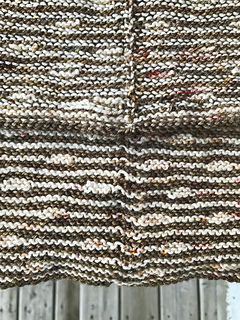patterns >  Crooked Kitchen Yarn
Crooked Kitchen Yarn
> Cavaletti Hat and Cowl











Cavaletti Hat and Cowl
A versatile unisex hat and cowl pair, this pattern is great for showing off lovely hand-dyed yarn. The little short row “blips” remind me of a horse stepping high over cavaletti poles and are fun to knit once you get going. The set is knit entirely in garter stitch and it’s written so you do not have to purl any rounds, using a way I developed with an overlapping stitch. Feel free to use your preferred method or to purl every other round if you like that sort of thing.
The pattern as written is for the 2-colour contrasting striped set as pictured (both are size L) in sport weight yarn; however, my prototype for this hat was done with the same number of stitches as the large size using leftover fingering weight yarn on 2.5mm / US 1 1/2 needles and it would fit a small adult/large child (it’s the multi-coloured hat in the pictures).
Have some fun, play around, bust your stash - use 2 colours or one main colour and minis or leftovers. Fade, pixelate, go for high contrast or a more blended look. Try a single colourway with a repeating colour band, working the short row blips on that one colour only as it comes up. Use fingering plus kidsilk lace for one of your colours for a very warm, fuzzy set. Add a pom pom or tassel or leave the hat clean at the crown. I can’t wait to see what you decide!
Skill Level Intermediate (the techniques are not difficult but it requires concentration and even tension)
Yarn: Approximately 600yds / 550m total, 300yds / 275m each sport weight yarn for MC and CC
Gauge: Hat is about 7 sts per inch on smaller needles rounds are difficult to count. Gauge for the cowl is very slightly looser at about 6.5 sts per inch.
Sizing: These are sized as M and L but are overall generously-proportioned - details are in pattern PLEASE NOTE I erroneously used “diameter” instead of circumference in the patterns when indicating the sizes - measurements are circumferences.
55 projects
stashed
46 times
- First published: January 2018
- Page created: January 27, 2018
- Last updated: December 30, 2018 …
- visits in the last 24 hours
- visitors right now




